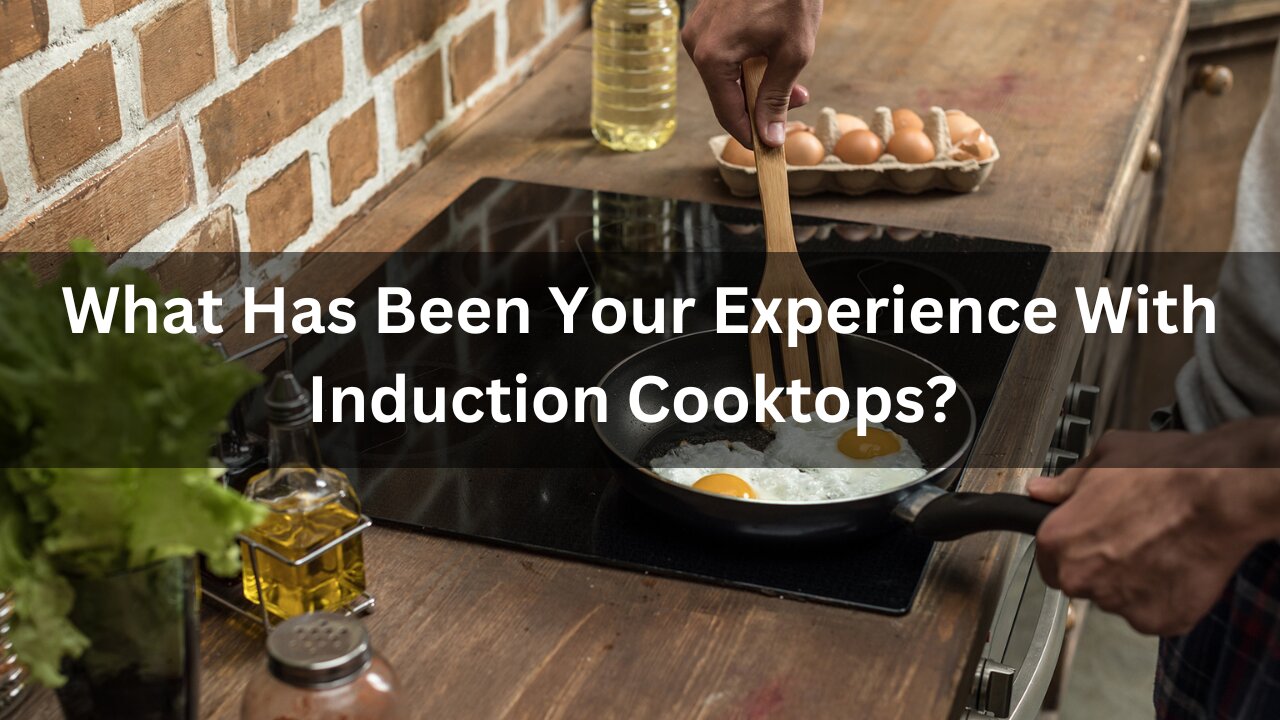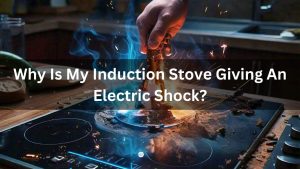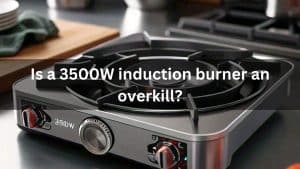My experience with induction cooktops is very good because they offer many more features than others. However, when you convert your kitchen from a traditional cooktop to an induction cooktop, it is a little bit difficult to use it because you need experience using an induction cooktop.
Many people complain that it is difficult to use, but in reality, it is easy. The same thing happened two months ago when I installed my new induction cooktop. I faced many difficulties using it, but after 20 to 25 days, I was trained to use it better, and I feel comfortable cooking with induction in competitions.
Moreover, in this article, we will discuss the easiest use of a cooktop and some key features of an induction cooktop that make it different from other cooktops or traditional cooktops. I will also give you an example of an induction cooktop.
Table of Contents
Is an Induction Cooktop Easy to Use?
There’s a common misconception that induction cooktops can’t cook quickly due to their reliance on magnetic waves. This is far from the truth. Induction cooking provides a superior kitchen experience, generating heat directly within the cookware. This direct heating method results in unparalleled accuracy and even heat distribution, eliminating frustrating cooking mishaps, such as sauces boiling over or meat scorching. With induction, I can confidently achieve perfect results every time, whether I’m boiling sauces or cooking proteins.
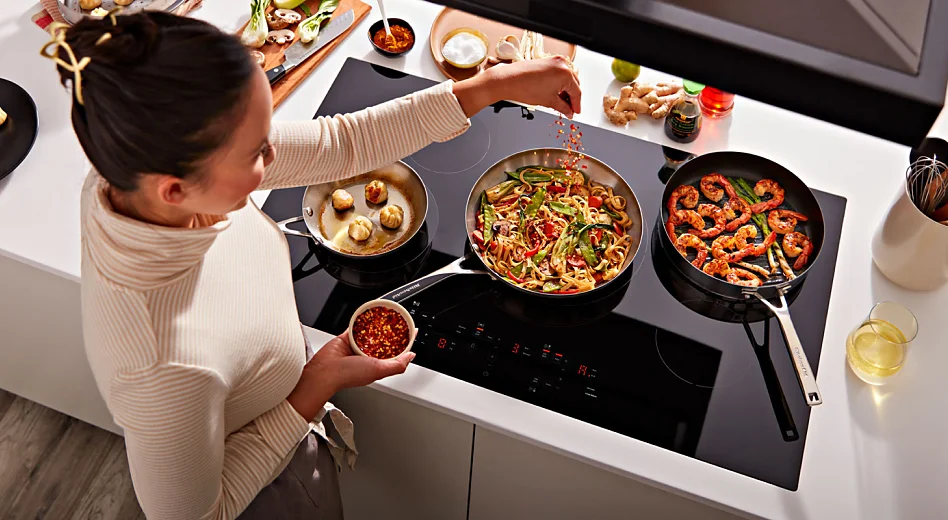
Personally, I prefer cooking with an induction cooktop because it’s faster and more precise. Induction heating is typically two to three times faster than gas cooking. The cookware heats directly from the magnetic waves, eliminating the need to transfer heat to the pan. This also allows me to select specific temperatures based on my cooking needs. Moreover, I can stop the burner immediately, reducing the risk of overcooking or boiling over.
What Is It Like to Cook on an Induction Cooktop?
Cooking on an induction cooktop offers a unique experience compared to traditional gas or electric stoves. Here are some significant differences I’ve noticed:
Rapid Heating and Cooling
Induction cooktops heat up and cool down rapidly. I can boil water or cook other items in just a few minutes, and I can instantly stop the temperature, protecting my food from overheating. This quick response is one of the standout features of induction cooking.
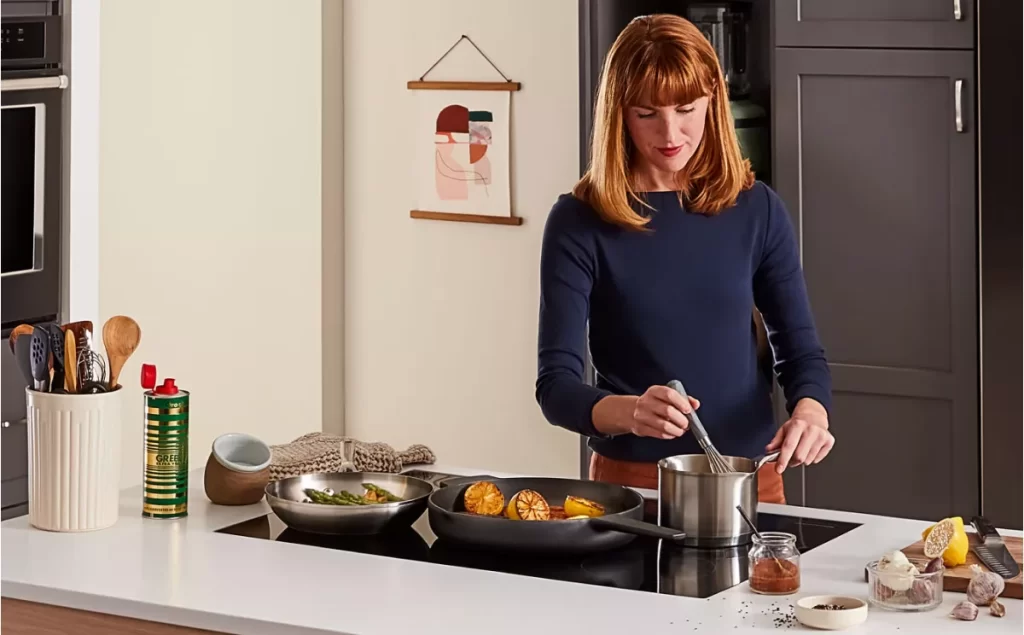
Precise Control
With induction, I can easily control the temperature and electromagnetic waves. There’s no need to wait for the burner to cool down before making adjustments, which is a game-changer in cooking.
Clean and Safe
One of the most appealing aspects of induction cooktops is their cleanliness. Only the cookware heats up, while the surface of the cooktop remains relatively cool. This reduces the risk of burns and makes cleaning a breeze, as the temperature is lower when spills occur.
Cookware Compatibility
It’s essential to note that induction cooktops only work with magnetic cookware. This means that I had to invest in new pots and pans compatible with induction cooking. While this initial cost can be a hurdle, it ultimately leads to a more efficient cooking experience.
What Is the Best Thing About Induction Cooktops?
Induction cooktops stand out among various cooking appliances for several reasons:

- Fast and Accurate Heating: Induction cooktops convert electricity directly into heat within the cookware, minimizing energy loss between the pan and burner. This results in quicker cooking times and better temperature control.
- Energy Efficiency: Induction cooktops are significantly more efficient than gas cooktops, using up to three times less energy. They are also 10% more efficient than traditional electric cooktops, leading to reduced energy bills and a lower environmental impact.
An Example of Induction Cooking
One of the simplest examples of induction cooking is boiling water. When I place a stainless steel pot filled with water on the induction cooktop, the magnetic waves generated by the cooktop interact directly with the pot’s base, causing the water to boil rapidly. This example illustrates the efficiency and speed of induction cooking.
Is Induction Cooking Better than Electricity?
Induction cooking is a type of electric cooking that uses magnetic waves to directly heat cookware. Compared to traditional gas or electric cooktops, induction cooktops are more efficient because they minimize energy waste. The superior control of induction cooking allows for precise temperature adjustments, making it a preferred method for many home cooks.
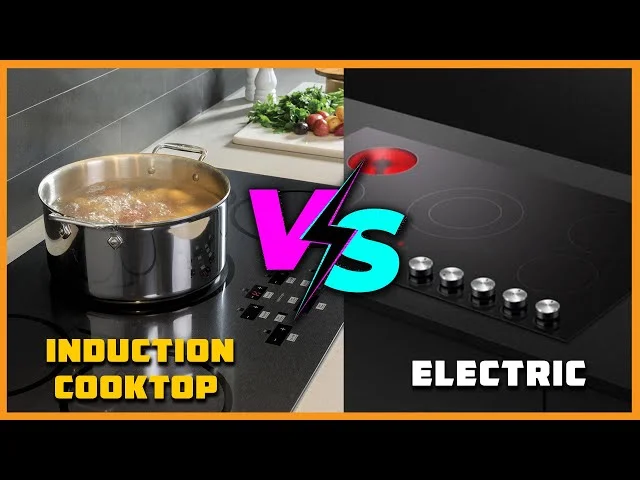
Transitioning from Gas to Induction Cooktops
When I decided to switch from a gas stove to an induction cooktop, I was both curious and skeptical. Having grown up with gas, I was accustomed to gauging heat visually by observing the flame. Transitioning to the smooth, glass surface of an induction cooktop felt like stepping into uncharted territory.
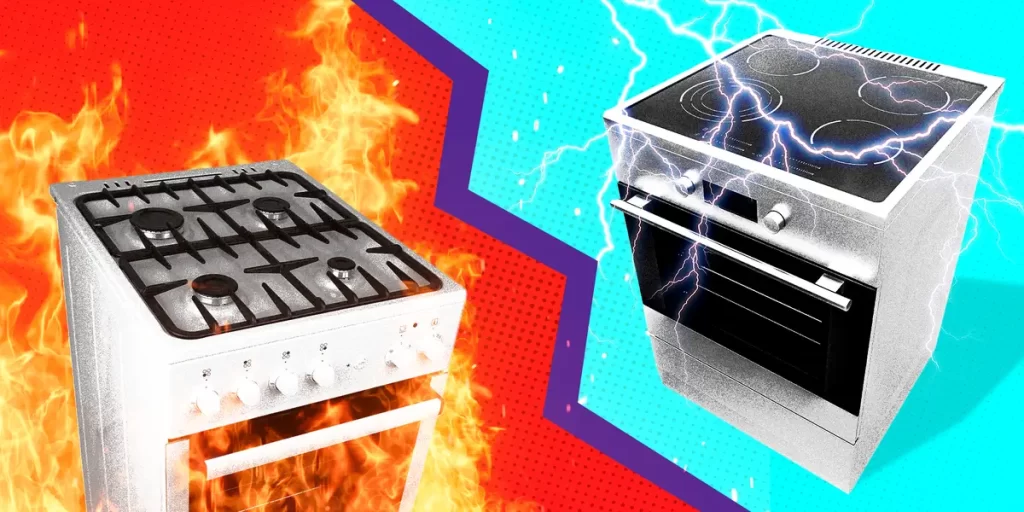
Key Differences I Noticed Immediately:
- Speed: The most noticeable difference was the speed at which induction heats up. Water boils in a fraction of the time it used to take on my gas stove.
- Precision: Induction cooking allows me to set the temperature exactly where I need it, unlike gas, where maintaining a simmer can be tricky.
Are There Any Downsides to Induction Cooktops?
While I love my induction cooktop, it’s not without its challenges:

- Cookware Compatibility Issues: As mentioned, you’ll need induction-compatible cookware, which can be frustrating if you already own high-quality pots and pans that don’t work with induction.
- Initial Learning Curve: Switching to induction requires adjusting my cooking habits. I had to learn to trust the precision of the temperature controls, as the burner doesn’t glow red to indicate it’s on.
- Noise Issues: Induction cooktops can sometimes produce a humming or clicking noise, especially at higher power levels. While this sound is normal, it can be distracting for those accustomed to the quiet operation of gas stoves.
Common Misconceptions About Induction Cooktops
They Are Only for Professional Chefs: Another myth is that induction cooktops are exclusively for professional chefs or high-end kitchens. In my experience, induction is perfect for everyday cooking, whether I’m whipping up a quick meal or experimenting with gourmet recipes.
Induction Cooktops Are Dangerous: One misconception I encountered was that induction cooktops are less safe. In reality, I find them much safer than gas stoves due to the absence of an open flame and gas leaks.
Related Articles:
Are Induction Stoves Considered Inductive Loads? 2024
Is A Magnetic Induction Stove Better Than A Traditional Stove?
Are Induction Cooktops More Energy Efficient? Comparison 2024
Conclusion
In conclusion, induction cooktops are much better than other traditional cooktops. This is due to some reasons I have already discussed above. Some key induction cooktop features include quick speed, rapid heating, accurate temperature control, and easy cleaning.
Induction cooktops also deliver fast and accurate heat or temperature because they generate energy directly in the cookware, so there is no chance of losing energy. Also, I have given you a personal example of boiling water in an induction cooktop.
FAQs
Can you use cast iron on induction cooktops?
Yes, as long as the base is flat, cast iron works perfectly on induction cooktops because it is magnetic.
Why does my induction cooktop make a clicking noise?
This is usually the sound of the electromagnetic components and the fan cooling the cooktop. It’s completely normal.
Is induction cooking faster than gas?
Yes, induction cooktops heat much faster than gas stoves because they transfer energy directly to the cookware.
Do I need special cookware for induction?
Yes, your cookware needs to have a magnetic base for the induction cooktop to work effectively.

